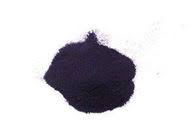natural indigo dye factories
The Revival of Natural Indigo Dye Factories
Natural indigo dye, revered for its deep blue hues and rich cultural history, has witnessed a resurgence in recent years as consumers seek sustainable alternatives to synthetic dyes. This revival has led to the re-establishment of natural indigo dye factories around the globe, particularly in regions traditionally associated with indigo production. These factories not only preserve ancient dyeing techniques but also support local economies and promote environmentally friendly practices.
Historically, indigo dye was derived from the indigofera plant and was widely used across various civilizations, including ancient Egypt, India, and Japan. The process of extracting indigo involves fermenting the leaves to convert the indican compounds into indigo pigment, which can then be used to dye textiles. This labor-intensive method has been passed down through generations, and many artisans possess intricate knowledge of dyeing techniques that elevate natural indigo into an art form.
In recent decades, however, synthetic dyes have dominated the textile industry due to their cost-effectiveness and vibrant color range. This shift, albeit beneficial for manufacturers, has led to significant environmental concerns. Synthetic dyes are notorious for their harmful effects on water systems and ecosystems, often containing toxic chemicals that pose risks to both health and wildlife. As awareness of these issues grows, consumers are increasingly turning to natural alternatives, sparking a revival in traditional dyeing methods.
Natural indigo dye factories have emerged as beacons of sustainability and cultural heritage. Many new enterprises emphasize ethical production, ensuring fair wages for artisans and minimizing environmental impact. These factories often utilize organic farming methods for cultivating indigo plants, which enhance soil health and reduce pesticide use. By investing in sustainable practices, they champion a holistic approach to production that benefits both the environment and the communities involved.
natural indigo dye factories

In addition to promoting sustainable practices, these factories also serve as educational platforms, sharing knowledge about the art of indigo dyeing with locals and visitors alike. Workshops and tours allow participants to engage directly with the dyeing process, fostering a deeper appreciation for the craft. This hands-on experience not only helps preserve traditional techniques but also empowers individuals with skills that can lead to economic independence.
Moreover, the revival of natural indigo dye factories is a testament to the growing trend of slow fashion—a movement that emphasizes quality and sustainability over mass production. Designers and brands are increasingly collaborating with these factories, using natural indigo to create unique, eco-friendly collections. This partnership not only enriches the fashion landscape but also helps sustain the livelihoods of artisan dye-makers.
The future looks promising for natural indigo dye factories, as the demand for sustainable and ethically produced textiles continues to rise. By embracing traditional practices and promoting environmental stewardship, these factories play a crucial role in redefining the global textile industry. As consumers become more conscious of their purchasing choices, the rich legacy of indigo dyeing is not only preserved but also celebrated, ensuring that this ancient craft thrives in the modern world.
In conclusion, the renewal of natural indigo dye factories marks a significant movement towards sustainability and cultural heritage protection. By blending tradition with modern values, these factories offer a glimpse into a more responsible and beautiful future for fashion and textiles.
-
The Timeless Art of Denim Indigo Dye
NewsJul.01,2025
-
The Rise of Sulfur Dyed Denim
NewsJul.01,2025
-
The Rich Revival of the Best Indigo Dye
NewsJul.01,2025
-
The Enduring Strength of Sulphur Black
NewsJul.01,2025
-
The Ancient Art of Chinese Indigo Dye
NewsJul.01,2025
-
Industry Power of Indigo
NewsJul.01,2025
-
Black Sulfur is Leading the Next Wave
NewsJul.01,2025

Sulphur Black
1.Name: sulphur black; Sulfur Black; Sulphur Black 1;
2.Structure formula:
3.Molecule formula: C6H4N2O5
4.CAS No.: 1326-82-5
5.HS code: 32041911
6.Product specification:Appearance:black phosphorus flakes; black liquid

Bromo Indigo; Vat Bromo-Indigo; C.I.Vat Blue 5
1.Name: Bromo indigo; Vat bromo-indigo; C.I.Vat blue 5;
2.Structure formula:
3.Molecule formula: C16H6Br4N2O2
4.CAS No.: 2475-31-2
5.HS code: 3204151000 6.Major usage and instruction: Be mainly used to dye cotton fabrics.

Indigo Blue Vat Blue
1.Name: indigo blue,vat blue 1,
2.Structure formula:
3.Molecule formula: C16H10N2O2
4.. CAS No.: 482-89-3
5.Molecule weight: 262.62
6.HS code: 3204151000
7.Major usage and instruction: Be mainly used to dye cotton fabrics.

